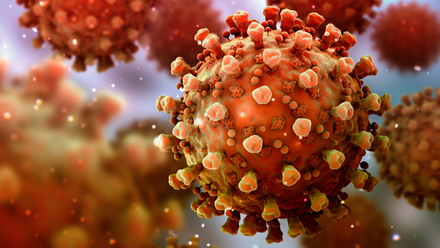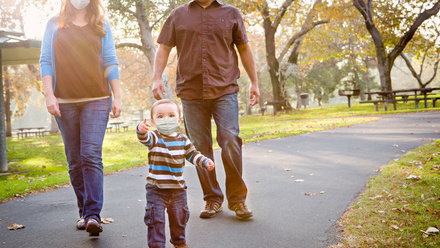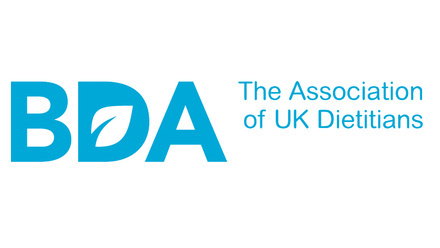The BDA has joined over 20 other health and care organisations to call on Prime Minster Boris Johnson to personally intervene to ensure that frontline health and care worker battling COVID-19 receive better protection.
In a letter coordinated by the Royal College of Nursing, the powerful alliance of Royal Colleges, Professional Bodies and Trade Unions make five key demands:
- Ensure all health and care providers assess and improve the quality of ventilation in all settings to reduce the risks of airborne spread;
- Amend the UK IPC guidance to reflect and increase the level of respiratory protection as a precautionary principle for all health and care workers providing care to people with known or suspected COVID-19, or as a result of local risk assessment;
- Update all guidance to reflect the evidence on airborne transmission, ensuring representation from a truly multidisciplinary range of experts including engineering, aerosol science, occupational health, infection prevention and control and behavioural science in addition to stakeholders such as Royal Colleges, professional and scientific bodies and trade unions;
- Collect and publish consistent data on health care workers who have contracted COVID-19 from likely occupational exposure so we can identify health and care settings where staff are most affected and target responses to address this;
- Publish, in accessible form, all scientific evidence on airborne transmission in health and care settings and undertake research to fill any knowledge gaps.
This latest step comes after months of lobbying and campaigning by the BDA and partners as part of the AGP Alliance. Find out more on our webpages, and consider writing to your MP to urge them to raise this important issue with Ministers.
Read the full text of the letter
Dear Prime Minister,
Re: Protecting health care workers - better ventilation, PPE, awareness and research
Over the past 12 months, you have seen the professionalism and dedication of health and care workers across the UK and, as you know, this care has been given at huge personal risk. Across the UK, at least 930 health and care workers to date have lost their lives and many more are suffering from the long-term adverse effects of COVID-19.
As organisations and individuals representing health and care workers and patients across the UK, we are calling for your urgent intervention to prevent the further loss of lives. Health and care workers are at three to four times greater risk of developing and dying from COVID-19 than the general public.1 However, measures to reduce airborne spread in high-risk health and care settings, which are mission-critical to the pandemic response, have thus far been inadequate. Current policies continue to emphasise the importance of fomite, droplet and direct spread but do not properly address airborne transmission.2
There is now no scientific doubt that COVID-19 spreads via the airborne route.3 There is also direct empirical evidence that the virus is readily transmitted in health care settings beyond formally-classified aerosol generating procedures (AGPs).4
The importance of ventilation to prevent the spread of COVID-19 in enclosed settings is well documented by the European Centre for Disease Prevention and Control (ECDC),5 the Scientific Advisory Group on Emergencies (SAGE),6 and in guidance from the UK and devolved governments to reduce the risk of airborne spread of infection in the public’s own homes.7
The current UK Infection Prevention and Control (IPC) guidance which leads and determines the selection and use of PPE across the UK does not accurately depict the airborne risks when sharing health and care settings including working in patients’ homes and public buildings. Neither does it adequately align and convey the importance of ventilation and, more widely, engineering controls in relation to Health and Safety Executive guidance.
We believe that given the rapid emergence and evolution of new variants of concern, a change in approach must be implemented at speed to protect patients and staff consistently across the UK. To reflect our concerns and the emerging scientific evidence, we call on you as Prime Minister to ensure that the UK Government works constructively with the devolved administrations to:
- Ensure all health and care providers assess and improve the quality of ventilation in all settings to reduce the risks of airborne spread;
- Amend the UK IPC guidance to reflect and increase the level of respiratory protection as a precautionary principle for all health and care workers providing care to people with known or suspected COVID-19, or as a result of local risk assessment;
- Update all guidance to reflect the evidence on airborne transmission, ensuring representation from a truly multidisciplinary range of experts including engineering, aerosol science, occupational health, infection prevention and control and behavioural science in addition to stakeholders such as Royal Colleges, professional and scientific bodies and trade unions;
- Collect and publish consistent data on health care workers who have contracted COVID-19 from likely occupational exposure so we can identify health and care settings where staff are most affected and target responses to address this;
- Publish, in accessible form, all scientific evidence on airborne transmission in health and care settings and undertake research to fill any knowledge gaps.
We have addressed this letter to you because your agencies and departments have not yet sufficiently responded to our concerns. While we are aware that a review of the IPC guidance has been carried out, we cannot agree with its apparent conclusions that the guidance should remain the same.
We recognise that our calls represent a different approach to producing and coordinating IPC guidance, using multidisciplinary collaboration as above, but this is an unprecedented situation. The evidence is clear and lives continue to be put at risk.
This is a UK-wide issue. Where coordinated, national action could make a decisive difference. We therefore look to the UK Government, and you as Prime Minister, to take the lead to address the inconsistencies and gaps in guidance and in the protection of patients and health and care workers.
Yours sincerely,
Dame Donna Kinnair Chief Executive and General Secretary Royal College of Nursing
Professor Trish Greenhalgh Professor of Primary Care Health Sciences University of Oxford
Dr Trevor Smith dm frcp President BAPEN
Professor Rustam Al-Shahi Salman President British Association of Stroke Physicians
Natalie Beswetherick OBE Director of Practice & Development Chartered Society of Physiotherapy
Nicki Credland Chair British Association of Critical Care Nurses
Kamini Gadhok MBE Chief Executive Royal College of Speech and Language Therapists
Steve Jamieson Chief Executive and General Secretary The College of Podiatry and AHPF Chair
Andy Burman Chief Executive British Dietetic Association
Karen Jenkins President Association of Nephrology Nurses UK
Dr Suzanne Bench PhD Chair UK Critical Care Nursing Alliance
Sandra Gidley President Royal Pharmaceutical Society
Gill Walton Chief Executive Royal College of Midwives
Dr Chaand Nagpaul CBE Council Chair British Medical Association
Dr Claudia Paoloni President HCSA
Dr Christine Peters, Consultant Clinical Microbiologst and Dr Matthew Butler Consultant Geriatrician FreshAir NHS
Dr Barry Jones Chair Aerosol Generating Procedure Alliance
Dr Crystal Oldman CBE The Queens Nursing Institute
Tracy Nicholls Chief Executive College of Paramedics
Paul Bristow Chief Executive Kidney Care UK
Rachel Harrison National Officer GMB
References
- Lednicky, et al. Viable SARS-CoV-2 in the air of a hospital room with COVID-19 patients. International Journal of Infectious Diseases: 100, 476-482 (2020).
- Wilson N.M. et al. Airborne transmission of severe acute respiratory syndrome coronavirus-2 to healthcare workers: a narrative review. Anaesthesia (75) 8: 1086-1095 (2020) https://doi.org/10.1111/anae.15093
- Zuo, Y.Y., Uspal, W.E. and Wei, T. Airborne Transmission of COVID-19: Aerosol Dispersion, Lung Deposition, and Virus-Receptor Interactions. ACS Nano 14 (12): 16502- 16524 (2020). Prather, K.A., et al. Airborne transmission of SARS-CoV-2. Science 370, 303-304 (2020). Morawska, L. and Milton, D.K. It is time to address airborne transmission of coronavirus disease 2019 (COVID-19). Clinical Infectious Diseases 71, 2311-2313 (2020). MacIntyre, C.R. and Ananda-Rajah, M.R. Scientific evidence supports aerosol transmission of SARS-COV-2. Antimicrobial Resistance & Infection Control 9, 1-3 (2020).
- Lednicky, et al. Viable SARS-CoV-2 in the air of a hospital room with COVID-19 patients. International Journal of Infectious Diseases: 100, 476-482 (2020). Eyre, D. W. et al. Differential occupational risks to healthcare workers from SARS-CoV-2: A prospective observational study. eLife 9, e60675 (2020). Nissen, K. et al. Long-distance airborne dispersal of SARS-CoV-2 in COVID-19 Wards: Nature Scientific Reports Rep 10, 19589 (2020).
- ECDC Heating, ventilation and air-conditioning systems in the context of COVID-19: first update. Technical report (2020) https://www.ecdc.europa.eu/en/ publications-data/heating-ventilation-air-conditioning-systems-covid-19
- SAGE Environmental and Modelling Group: Role of ventilation in controlling SARSCoV-2 transmission (2020) https://www.gov.uk/government/publications/emg-role-ofventilation-in-controlling-sars-cov-2-transmission-30-september-2020
- Government campaign on ventilation in homes https://www.gov.uk/government/ news/new-film-shows-importance-of-ventilation-to-reduce-spread-of-covid-19





